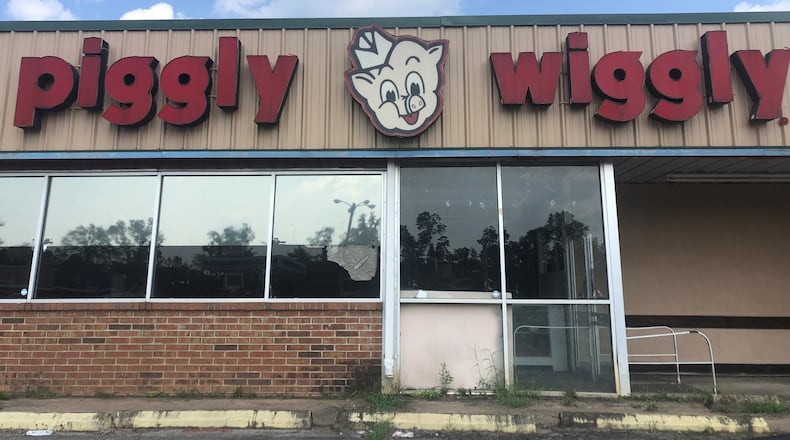TALBOTTON, Ga.-- Tony Lamar is the mayor of tiny Talbotton, Ga.. He is also the chairman of the county health board, the P.E. teacher at the local school, the football coach and the track coach.
Mayor Lamar grew up in this one-stoplight town about 35 miles northeast of Columbus.
When he graduated from college at nearby Fort Valley State University, he had job offers in Atlanta and Macon. But a friend back home in Talbotton called him with a different idea.
“He said, ‘They don’t need you in Macon. They don’t need you in Atlanta,’” Lamar told me during an interview at Talbotton’s City Hall, which is also the police department and the utility department. His friend told him, “We need you at home.”
Lamar’s friend was right. His hometown needed him then and it needs him now.
I picked Talbotton for the next stop on my Georgia politics road trip because, like so many communities across rural Georgia, its population is shrinking. Census estimates pegged its population high at 1140 in 1980, but it’s contracted every Census since then to about 850 last year.
Talbotton is fortunate to have two features many small towns lack, with a small medical facility and consolidated K-12 school on a single campus just outside of town.
But the mayor points to the day the Piggly Wiggly closed about a decade ago as the moment that really changed everything.
“We feel if we could solve that problem, we could attract more people,” he said.
Without a grocery store, families now have to drive 25 minutes to the nearest fresh food. More than that, the store was an important source of jobs for residents and a crucial tax base for town operations.
Once the anchor business for the only shopping mall in town, grass now sprouts through the Piggly Wiggly’s cracked, abandoned parking lot. Four conveyor belts stand like ghosts inside next to dead cash registers. I never thought a sign for beer on sale, still dangling from the ceiling, could look so sad, but it does.
A tornado in the area in 2019 added insult to injury.
The story is better for Columbus, Ga., where the population is growing thanks to jobs spun off by nearby Ft. Benning and corporate headquarters like AFLAC and Synovus. But the city of about 200,000 is not matching the rocket-fast pace of expansion in places like Gwinnett County and Cobb.
Growth isn’t a competition of course, except when it comes to reapportionment and redistricting, the constitutionally required process of redistributing congressional and legislative districts based on population changes.
When Georgia’s maps are redrawn later this year in a special legislative session, growing areas outside of Atlanta will get more legislative seats. Places with slower-growing or shrinking populations, like the area that includes Talbotton, will get fewer.
No member of the Georgia Legislature has seen more rounds of redistricting than Rep. Calvin Smyre, the Democratic Dean of the House from Columbus. He was first elected in 1974 to fill a new seat created by, what else, redistricting.
“We’ve got a lot of new members in the General Assembly, who I don’t think understand what’s coming,” he said when I went to see him in his stately first-floor office on Washington Street downtown. “People don’t understand how difficult and tough the process is.”
Along with the personal battles that are sure to unfold, it weighs heavily on Smyre that this will be the first round of redistricting in Georgia since the U.S. Supreme Court invalidated Section 5 of the Voting Rights Act, which helped safeguard racial equity by requiring preclearance for new maps by the U.S. Department of Justice.
He also knows rural counties and the areas surrounding Columbus could be in for a painful shifting of seats, just like Albany, Valdosta, and anywhere that’s not in Metro Atlanta.
“When you have that influx of people, and you carry out one person, one vote, there’s no easy way to get around it, the power is centralized in Atlanta,” he said. “Power is not the same as influence, but it’s happening.”
One of the smartest thinkers around on the growing divide between Metro Atlanta and rest of the state is Charlie Hayslett. He sees the next round of redistricting as a potential tipping point when Atlanta will begin to dominate both numbers and influence in the General Assembly.
“The way the growth trends have been, I don’t see how that doesn’t tip so that basically half or more of the Legislature, Republicans or Democrats, are representing a part of the Metropolitan Atlanta area,” he said. “I think the Metro Atlanta, rest of Georgia divide politically is going to become starker.”
Even Mayor Lamar sees the divide from where he sits in Talbotton.
“I feel there are two Georgias,” he said. “Atlanta, Ga. and the rest of Georgia.”
There need to be more resources for the rest of Georgia for “sustainability,” he said. He didn’t mean sustainability in the eco-friendly sense, but resources, literally, to sustain the viability of the towns themselves.
He has ideas for how to grow the town. And he’s still trying to persuade the young people he knows, who are talented and ambitious, to come back home to Talbotton the way his friend persuaded him so many years ago.
“I tell them, ‘In not too long, guys, there’s gonna be a time when Tony Lamar will not be able to do this anymore,’” he said. “I can’t serve as the mayor forever.”
This article is the fourth installment of the AJC’s Georgia Politics Road Trip series, reporting from the road on the politics throughout the state.
About the Author
Keep Reading
The Latest
Featured





